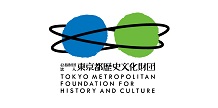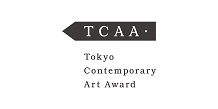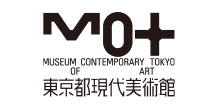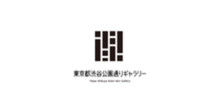Announcement of successful candidates for OPEN SITE 2017-2018
Announcement of successful candidates for OPEN SITE 2017-2018

TWS is delighted to announce successful project proposals for the OPEN SITE 2017-2018.
【Part 1】
Kim Woojin (South Korea)
"Brave New Exercise: Memorized Movements" 〔Exhibition〕
Arata Hasegawa (Japan)
"Impurity / Immunity" 〔Exhibition〕
reConvert project (Spain)
"reC_TECH" 〔Performance〕
Dr. Christian Dimpker (Germany)
"Grau-braun-weiße Ware" 〔Performance〕
【Part 2】
Daisuke Kuroda (Japan)
"The Absent History of Sculpture"
IP Yuk-Yiu (Hong Kong)
"PLAY.GROUND: video game art from Hong Kong" 〔Exhibition〕
Galvanize and Fretwork Ensembles (England)
"Happenstance" 〔Performance〕
※The tile of each project is as of application was submitted.
=============================
In addition to these projects,
Raewyn Hill & Naoko Yoshimoto
"Garden of Silence"
will be held as TWS Recommendation program.
※We are very sorry to announce that this program has been cancelled due to inevitable reason. (2017/7/21)
=============================
REVIEW by juries
The Open Site program makes an open call for submissions of projects, irrespective of genre. For the sake of convenience, it is divided into the categories of exhibition and performance, but this is merely the operational format and not indicative of any particular genre. While the program would, at first glance, appear to offer complete freedom, there is actually a highly demanding requirement running right through it. For the most part, freedom is only enjoyed within the confines of a genre. The idea that you can do what you want only arises because boundaries are set. From outside these boundaries, this freedom looks like an expression of restriction and frequently appears ludicrous. Consequently, in responding to this call, applicants have to take things up a level, introducing a certain element of reflection on the questions of what genre, exhibition, and performance actually are, as well as painstakingly explaining the necessity of the project in what one might call "comprehensive words" -- that is to say, words that have a certain historical and social resonance. I considered things like this during the screening process and encountered some outstanding projects that satisfied the requirements. Indeed, I was highly inspired by them myself. All that now remains to be seen is whether or not the successful candidates have the practical knowledge and skill to bring their projects to fruition (the only thing that we cannot judge in the screening process). At any rate, I am looking forward to the day when they take shape.
ENDO Mizuki
(Curator)
The number of applications was much higher than last year, which made me realize how precious the opportunity to present one's own projects is right now. It seemed to me that this showed what a long-awaited chance it was for applicants. In fact, many of the diverse applicants and their project proposals provoked consideration of the way in which works and exhibitions should take shape in the context of an awareness of contemporary issues, whether personal or social. In the exhibition section, I endorsed those which evoked an awareness of curation in their production and presentation -- one might go so far as to call it "exhibition as a form of expression." In the performance section, in which we received applications focused on the genres of dance, theater, and music, I believe that this awareness was clearly expressed in proposals that made us consider concerts as a system and the nature of contemporariness in contemporary classical music. That is why so many music-centered projects have been chosen. We hope that in both categories, this will result in works that shine a critical light on current approaches to the presentation of exhibitions and concerts.
HATANAKA Minoru
(Chief Curator, NTT InterCommunication Center [ICC])
Despite not having been especially aware of it in the first year of the program, during this year's screening I gained a very strong sense of the value of the Open Site program as a call for projects that can be implemented at TWS Hongo, without any constraints on genre. We received many creative and sincere applications -- something that goes without saying, in a sense, if you think seriously about art today -- that included not only the exhibiting of artists' works, but also projects centered on exhibitions themselves and works that were seemingly inseparable from academic research. As a result, in the performance category, none of the submissions chosen would have been out of place if entered in a conventional composition contest, including works submitted as precise musical scores. This evoked highly complex emotions for me: on the one hand, I am looking forward to their performance, but on the other, as a composer who is a contemporary of these candidates, I am uncertain whether I should be happy or sad that I can only hear these challenging new works as part of Open Site.
MIWA Masahiro
(Composer, Media Artist / President, Institute of Advanced Media Arts and Sciences [IAMAS])
In this, the second year of the Open Site program, which began last year, the number of applicants increased and submissions from overseas accounted for 60% of all proposals. Although the program is divided into exhibition projects and performance projects, the concept of opening up creative spaces to all genres means that proposals from a diverse array of genres are screened on the same footing. They range from curation projects to exhibitions of works by the artist; from experimental initiatives focused on a feature of a single genre to cross-genre endeavors; and from schemes that attach importance to an open creative process through to completion to projects involving the presentation of a finished work. Each has its own unique appeal and significance, so in selecting projects with different strengths, we undertook repeated rounds of discussion, as needed. I am intrigued to see how the distinctive features of each will be showcased and how their differences will look in the context of the overall program.
KONDO Yuki
(Director of Arts Program and Residency Division, Museum of Contemporary Art Tokyo)
=============================
Application period:
2017/2/28 (Tue) - 4/19 (Wed)
Execution Period:
Part 1|2017/10/14 (Sat) - 2017/11/26 (Sun)
Part 2|2017/12/9 (Sat) - 2018/1/28 (Sun)
Total number of applications:
283
Juries:
- Mizuki Endo (Independent Curator / Executive Director of HAPS)
- Minoru Hatanaka (Senior Curator, NTT InterCommunication Center [ICC])
- Masahiro Miwa (Composer, Media Artist/ President, Institute of Advanced Media Arts and Sciences)
- Yuki Kondo (Tokyo Wonder Site)







